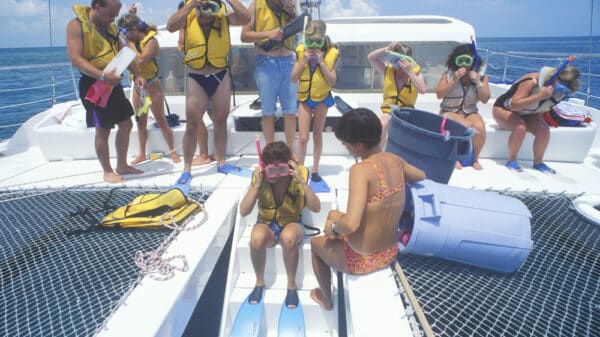The innovative “quiet boom” technology of the X-59 could revolutionize supersonic commercial flights over land by 2029.
Since the retirement of the Anglo-French Concorde over two decades ago, commercial supersonic flights have been absent from the skies. However, NASA is actively testing a new supersonic aircraft model that may serve as the prototype for a future generation of commercial passenger jets.
Lockheed Martin is currently developing the X-59 prototype for NASA in California, where they plan to conduct test flights in nearby communities. These tests aim to evaluate a groundbreaking sonic boom-dampening technology designed to mitigate the disruptive effects of supersonic travel. A sonic boom, which occurs when an aircraft exceeds the speed of sound, produces loud shock waves that can disturb populated areas, often leading to rattling windows and damage to fragile items in homes.
Traditionally, sonic booms have created noise levels exceeding 110 decibels—comparable to the sound of a thunderstorm or a large explosion. As a consequence, the use of both civilian supersonic aircraft like the Concorde and military jets has been restricted to non-populated areas or over oceans. This limitation hampered their operational viability, impeding the growth of the supersonic aviation market.
The introduction of the Concorde into the U.S. market was significantly delayed due to noise concerns. Although it was ultimately authorized to operate from U.S. airports in 1976, the aircraft’s high operational costs and steep ticket prices rendered it unprofitable, leading to its retirement in 2003 after nearly three decades of transatlantic service.
The X-59 is projected to fly at altitudes of 55,000 feet and at cruising speeds of Mach 1.4 (925 mph), significantly softering the sonic boom to a “sonic thump”—a sound likened to a car door closing. This development would enable the aircraft to fly at supersonic speeds over land, thus offering a more substantial segment of the transatlantic flight at high speeds compared to its predecessor, the Concorde, which operated at Mach 2.02 (1,330 mph).
In a significant policy shift, a ban on commercial supersonic flights across U.S. airspace was lifted in June 2025, effectively paving the way for supersonic travel to destinations beyond just oceanic routes.
Moreover, commercial supersonic aircraft are currently in their developmental phase. Boom Supersonic, a company with substantial orders from United Airlines, has undertaken a successful test flight of its prototype known as the Overture. This aircraft, which has 15 firm orders from United, is expected to operate entirely on sustainable aviation fuel (SAF) and aims for a 2029 service entry.
According to Boom’s estimates, the Overture could drastically reduce travel times, such as from Los Angeles to Sydney in just under nine hours compared to the current 14.5-hour journey. Other routes, such as San Francisco to Tokyo and Newark to London, would also see significant time reductions. Designed to accommodate 60 to 80 passengers, the Overture would cruise at Mach 1.7 (1,304 mph) and has received orders from both American Airlines and Japan Airlines.
Over its operational lifespan, the Concorde maintained an impressive safety record with no passenger fatalities for 24 years. This record came to an end in 2000 when an Air France charter flight crashed shortly after takeoff, prompting a temporary grounding for safety modifications. Despite improvements, the profitability issues led to its retirement shortly thereafter.
In summary, the advancements in supersonic flight technology, particularly with the X-59 and Overture, signal an exciting new era for commercial aviation. The phased reintroduction of supersonic travel promises not only faster flight times but also a commitment to sustainability and noise reduction, potentially transforming the way we think about air travel in the coming years.






























